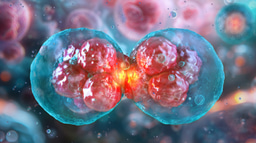Controlled synthesis of a library of one-dimensional segmented heteronanostructures
Published in Physics
The precise design and synthesis of one-dimensional segmented heteronanostructures (1D-SHs) are crucial for achieving synergistic effects and functional integration in various applications. Heterogeneous interfaces within these structures play a vital role in electron transport, magnetic coupling, and phonon scattering, thereby enhancing performance in photocatalysis, thermoelectrics, and beyond. Despite advancements in fabrication methods such as vapor-liquid-solid growth, solution-liquid-solid growth, and epitaxial growth, a simple and general synthesis for one-dimensional periodic heterostructures still remains formidable.
While significant progress has been made in the synthesis of 1D-SHs like sulfides and selenides, the exploration of telluride-based nanomaterials has remained relatively limited. Telluride materials offer distinct advantages such as high theoretical volume capacity and electrical conductivity, making them promising for various energy storage and optoelectronic applications. Their higher density compared to sulfides and selenides further enhances volume energy density, particularly beneficial in battery technologies. Transition metal tellurides, characterized by unique nanostructures with large interlayer spacing, facilitate rapid ion transfer in electrodes. Establishing a simple and scalable platform for constructing a library of telluride 1D-SHs is crucial. Additionally, elucidating their evolution mechanisms and exploring their diverse applications are pressing issues.
In our recent paper published in Nature Communications (DOI: 10.1038/s41467-024-47446-7), we proposed a simple and versatile approach for synthesizing a family of one-dimensional segmented heterostructures. The continuum phase field simulations ensure a deeper understanding of the formation process and ordering evolution. Utilizing tellurium nanowires (NWs) with a high aspect ratio as the model structural unit, the reaction involved the addition of a complexing agent, NH4SCN, and under-stoichiometric Ag+ in Te NWs, resulting in the rapid formation of Te/Ag2Te SHs with a segmented heterogeneous nanostructure. To confirm their one-dimensional segmented morphology and structure, we employed the Transmission electron microscopy (TEM) and energy-dispersive X-ray spectroscopy (EDS) to observe their uniformity and determine the element distributions. Other measurements, such as X-ray diffraction (XRD), Raman spectra, and X-ray photoelectron spectroscopy (XPS) spectra further validated the biphasic nature of Te/Ag2Te SHs. Then we revealed the evolution mechanism of Te/Ag2Te SHs through the continuum phase-field model and in-situ environmental liquid-state cell in TEM.
To disclose the energy variation and stress distribution during the formation of 1D-SHs, we collaborated with Yong Ni group (University of Science and Technology of China) to perform the continuum phase field calculations. Interestingly, they presented a novel model to dynamically traced the whole evolution process of periodic ordered structures. Different from the previous works that mainly focused on static configurations, they employed a computational model integrating intact Te NWs with the surrounding Ag+ solution to simulate the dynamic changes in Ag concentration within Te NWs. Through this approach, we uncovered the kinetics and dynamics of the formation process, revealing the transition from irregular strip structure to regular segmented structure.
We received many pertinent comments and valuable opinions from Prof. Luis M. Liz-Marzá, who has rich expertise in the growth mechanism of metal nanocrystals. According to his suggestions, we recaptured the morphological evolution of the Te/Ag2Te segmented structure, especially the initial island formation process. In-situ liquid flow TEM was used to visualize the morphological changes during the initial stage. Spectroscopic characteristics, such as UV−vis absorption and fluorescence emission spectra, are also studied to verify the three-stage evolution process. Moreover, we selected Ag2Te/PbTe SHs to demonstrate the effect of segmented structure on practical applications.
In summary, this wet-synthesis methodology emphasizes the deliberate under-stoichiometric feed of reactant with patterns of the template unreacted. The axial stress in the early-formed islands defies the core-shell formation, while alloy is no the product due to the standard redox potential differences between the template and metal feed. The generalization and post-transformation produce 25 nanowire-nanowire and nanowire-nanotube segmented heterostructures, with 13 elements involved. Mechanical simulations based on the phase field model illuminate the three-stage formation and evolution process of the ordered segmented heterostructures, i.e., island generation, stripe penetration and segment ordering. The elastic energy calculations also specify the stress-induced ordering mechanism. This work would open a new avenue in nanomaterial diversity field and cast light on the understanding the formation of periodic nanostructures.

Follow the Topic
-
Nature Communications

An open access, multidisciplinary journal dedicated to publishing high-quality research in all areas of the biological, health, physical, chemical and Earth sciences.
Related Collections
With Collections, you can get published faster and increase your visibility.
Clinical trials 2025
Publishing Model: Open Access
Deadline: Dec 31, 2025
Women's Health
Publishing Model: Hybrid
Deadline: Ongoing





Please sign in or register for FREE
If you are a registered user on Research Communities by Springer Nature, please sign in